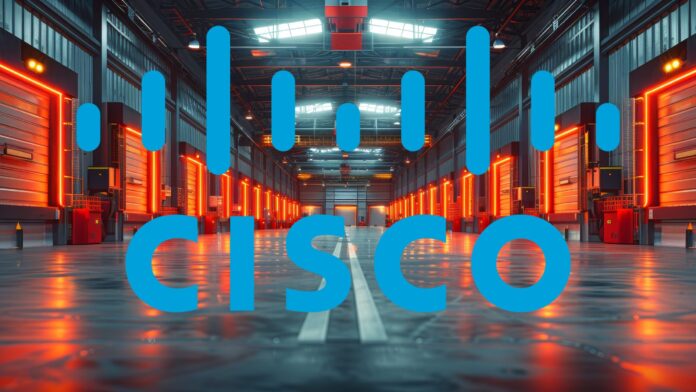It seems like you can have the same conversation about Industry 4.0 whether AI is presented as the big kahuna in the tech-mix or hardly mentioned at all, like the elephant in the room. This conversation with Cisco, taped a couple of months ago at MWC, where talk about Industry 4.0 mostly focused on (private) 5G, but only transcribed this week after Hannover Messe, where it was all about (industrial) AI, followed the second course. But the conclusion is the same: that the network pipes don’t matter so long as they keep the data flow, and that they may well be replaced and reordered to feed the new AI data-hydrant.
But the real line from Cisco is that, for enterprises, all the different Industry 4.0 taps should work the same, and be managed as one. “We have no religion – to a fault, really,” says Vikas Butaney, senior vice president of multi-cloud networking and industrial IoT at Cisco. It is true; Cisco, which has “refactored” its public core LTE/5G proposition (“it’s not as simple as just shrinking it down”) for private networks, has a strong hand in non-cellular network technologies, too: Wi-Fi, of course, but Cisco was also an original pioneer in the LoRaWAN movement, and helped to develop 6LoWPAN, which became WiSUN.
It is offering the full complement, alongside short-range non-cellular IoT, in the form of BLE and Zigbee, and long-range cellular IoT, from LTE Cat-2 upwards. Which none of its new rivals in the private LTE/5G space can do. Plus, it has a commanding legacy IT-managed OT base in enterprises, too – mostly because of Wi-Fi, including what-it-calls ‘ultra-reliable Wi-Fi’ for dozers and diggers, and gantry cranes (presented, of course, as essential use cases for ‘ultra-reliable’ private 5G), but also with all of these other non-cellular IoT technologies for battery-powered sensing and tracking devices.

“All the biggest automotive companies are our customers,” comments Butaney at MWC, and he races through a cast of unnamed enterprise customers in every hard-nosed industrial sector to explain the point that plumbing is plumbing, so long as it works. Cisco, of course, authored the original however-many-billion massive IoT forecast from however-many-decades ago (referenced needed), which pumped-up the whole market. As it stands, with 104 million cars on its ‘control centre’ platform, it is in the top league for big-scale IoT – along with the likes of M2M veteran Vodafone (185 million) and meter specialist Itron (86 million) – and is probably out on its own when it is all added up.
Butaney says: “We’ve been active in the IoT space for 15 years or so, before I took the job, when Cisco saw we were going to connect millions and billions of things – in addition to human beings. And we started with industrial switches for companies like Rockwell to connect factory floors, and with technologies like 6LoWPAN for smart meters for companies like Itron.” More broadly, as the IoT discipline has expanded from low-power tracking and monitoring to higher-powered sensing and control for industrial automation, Cisco has reworked its mobile operator product as a private 5G offer for when enterprise Wi-Fi won’t cut it.
“The point is to be clear about the use case,” says Butaney. But there is crossover, too, and he makes clear that Wi-Fi is a nuanced technology, and that an engineered industrial version of stock Wi-Fi (“same frequency, same radio layer, same MAC, but with an MPLS overlay”) can work with a retrofitted client device to provide the right reliability and mobility for automated guided vehicles (AGVs) and autonomous mobile robots (AMRs), for example. “Some of the biggest automotive companies are embedding that into their robots,” he says. Later, he specifies work with an Italian car maker, plus at mines, ports, and railways (Wi-Fi based “video surveillance at 200mph”).
“There is a diverse set of use cases. But customers have choices, too. Some say, ‘Look, I’m in mining, and I have to cover a hundred square miles, and I want cellular’. And that’s fine; we’ll do that. And cellular sort-of has a unique space, certainly when you go outdoors, and want to cover lots of area with just a few radios. But it’s not exclusively cellular, either. And indoors, the conversation often goes the other way – like, ‘you already have a Wi-Fi network, and an ultra-reliable version is better because Wi-Fi is easier to manage and control’. But in the end these are all just pipes, and they all have to co-exist. The thing is to deliver the outcome, and to make it secure and easy.”
Which is the crux of the Cisco proposition in Industry 4.0. The firm has a problem of sorts with cellular, insofar as cellular works differently; it is too complex, for its liking. It needs to be simplified and integrated if enterprise IT teams are to manage and enterprise OT teams are to control cellular-connected devices, machines, and processes as part of their orchestrated smart-factory operations. “The licensed cellular space is incredibly complicated. I mean, it’s complicated for operators and it’s what they do for a living,” comments Bob Everson, senior director of mobile architecture and ecosystem for Cisco Systems, who is with Butaney in a backroom at MWC.
“Enterprises are like, ‘What is this whole 3GPP thing, because I don’t want to start going to meetings’. I mean, even SIM-based authentication, to secure and register a device on a network – because the enterprise wants to manage the cellular network in the same way it manages its existing assets, with the same policy and security infrastructure. There is lots of very sophisticated physics in the radio, but that part is going to be solved. The biggest barrier is how you integrate private cellular into the enterprise. And so the simpler we make it, the less friction there is to adopt. And then it’s just a choice: licensed [public/private] cellular for this, unlicensed [Wi-Fi/IoT] for that.”
Butaney rejoins: “There are too many three or four letter tech acronyms out there; the IT administrator has a methodology to manage the network, and then this industry turns up with a new technology – with all-new authentication and management. Look, deploying on day-zero is one thing, but once a technology goes into a factory, it’s never coming out. And with cybersecurity top-of-mind, you have to be respectful; you can’t just talk about the tech. Some enterprises are really plugged into the 3GPP roadmap, but most don’t have the resources for all of that. They have a problem, and they want a way to solve it – without having to think too much.”
He adds: “Our approach is not just to be agnostic on the radio or the layer one / two stuff, but it’s the management and operations that we are focused on. It’s about unifying experiences, and bringing IT and OT teams together. This is the difference with Cisco. Because we have grown up in this space; we have the market leadership for enterprise networks – from the smallest coffee shop to the biggest autoplant. We see what they’re doing from an IT point of view, and we are just trying to make their lives easier – because of the skills shortage, because of supply chain issues, because of cybersecurity. There’s so much for them to deal with, and so we just have to simplify.”
It is interesting because, of course, there is still a narrative in Industry 4.0 about IT and OT, as if they are targeted as parallel entities with distinctive influences in terms of the purchase, deployment, and management of critical edge infrastructure, but that they are converging around the same edge systems, and joined in pursuit of the same goals. RCR Wireless suggests that Volkswagen was on stage at Hannover Messe last year, and said very clearly that private 5G needs to work like an enterprise IT network. “Yeah, that’s exactly right,” responds Butaney. But that was Volkswagen IT speaking for Volkswagen OT on the shop floor, right? It’s a jumbled question, but is that the way?
Because the standard view is that Cisco is an IT company, like HPE, both of which would be expected to argue that IT is the buying centre, even in hard-nosed OT industrial enterprises; and that companies like Rockwell and Siemens, say, are perceived as OT vendors, and might argue that OT, as the customer centre (in practical terms), holds sway when it comes to deploying critical-grade edge infrastructure. So what gives? Are those simplistic labels, which mean something in conversation, but don’t really mean much in business – because Volkswagen is a Cisco shop, or because it’s a Cisco shop in the office, and a Siemens shop on the floor?
I mean, is that IT/OT thing overplayed, or does one or the other rule the roost in Industry 4.0? “It’s way too simplistic,” responds Butaney. “Five years ago, all these manufacturers had bespoke architecture in every factory because the local factory person was doing it, and the board worried about consistency – impacting quality and agility, and so on. And when they introduced a new car, they wanted it to be the same in the US, Canada, Mexico, and all around the world. So IT helped to create the architecture. It’s not an IT network; it’s an IT architecture, standardised across their factories. Because of consistency, and also cybersecurity. But where IT lays it out, OT runs it.
“Because IT might not have staff on the floor, whereas there is a plant manager in every factory. So it’s not like this old idea that IT/OT are going to come together. I don’t think that’s really right. Because our customers have expertise in a given job function, right? It is like me trying to tell a utility how to run a substation. That’s life-and-death technology. Cisco’s heritage is in IT; but at the end of the day, we want to help customers solve a problem. I’m not going to out-Siemens Siemens. Siemens is very good at what it does. But we have a different value proposition. And CEOs are asking their CIO/CISOs to enable OT teams in factories – so they can unleash the power of AI.”
And there we are; it’s a conversation about industrial AI in the end (with 5G somewhere in the mix, maybe) – as enabled by IT, enabled by the likes of Cisco, to be managed by OT, enabled by the likes of Siemens. Which sounds, for the sake of argument, like IT rules the roost, but like OT lays the eggs. And that even if these functions remain separate, their relationship must be closer. What all of that means for the suppliers of networks, sensors, servers, software, and services in Industry 4.0 is for the reader to decide – or for another discussion, for another time.

